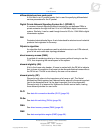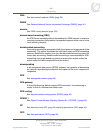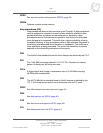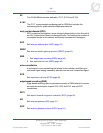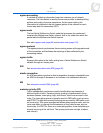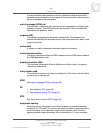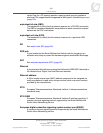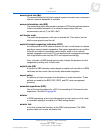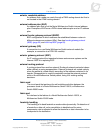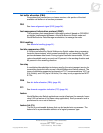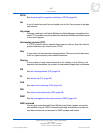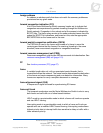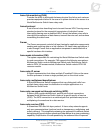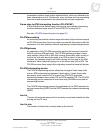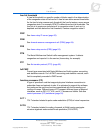
- 50 -
List of terms
Nortel Multiservice Switch 7400/15000/20000
Terminology
NN10600-005 7.2S1 Standard
PCR7.2 and up March 2006
Copyright © 2006, Nortel Nortel Confidential
excess burst size (Be)
The amount of data (in bits) that a network agrees to transfer over a measured
interval if network bandwidth is available.
excess information rate (EIR)
The sustainable rate of data transfer in excess of CIR that the network delivers
if there is available bandwidth. It is related to excess burst (Be) and
measurement interval (T) as EIR = Be/T.
exit border node
The node that progresses a call over an outside link. This node is the last
within a peer group to see the call.
explicit forward congestion indication (EFCI)
An indicator that an ATM network element can set in a cell header to indicate
pending or current network congestion. End system applications can read this
indicator and reduce transmission requirements, which in turn reduces
network congestion over time. EFCI is a reactive traffic management strategy.
Not all applications can read the EFCI and respond accordingly.
Also, a function of ABR through which nodes indicate the presence of local
congestion by setting a bit in traffic cells.
explicit rate (ER)
A function of ABR whereby nodes deposit an explicit cell rate offer in a BRM
cell based on the current rate and locally determined congestion.
export policy
A collection of rules that govern the distribution of route information. These
policies are used by the BGP, EGP, OSPF, and RIP route management
protocols.
extended superframe (ESF)
One of the framing patterns for a DS1 line consisting of 24 frames for each
superframe. See also
D4 (page 38).
exterior
In PNNI networking, a term that indicates that an item (such as a link, node,
or reachable address) is outside of a PNNI routing domain.
exterior link
A link that crosses the boundary of the PNNI routing domain. The PNNI
protocol does not run over an exterior link.



